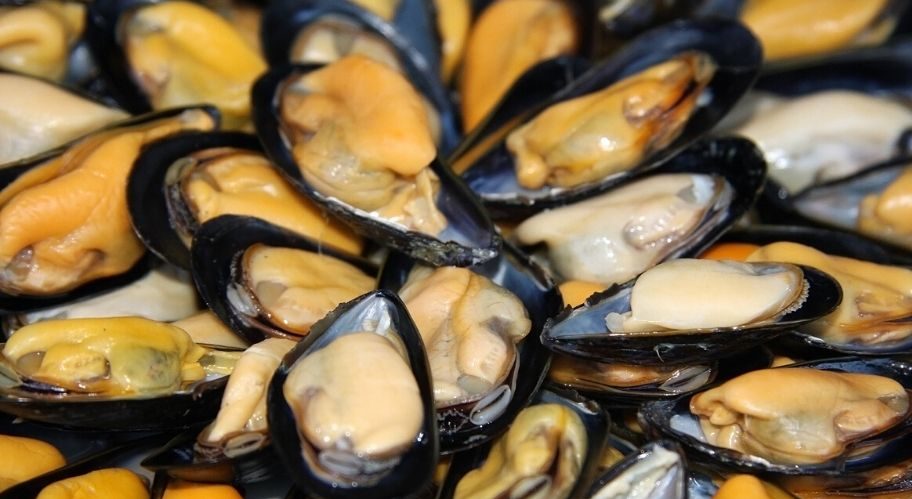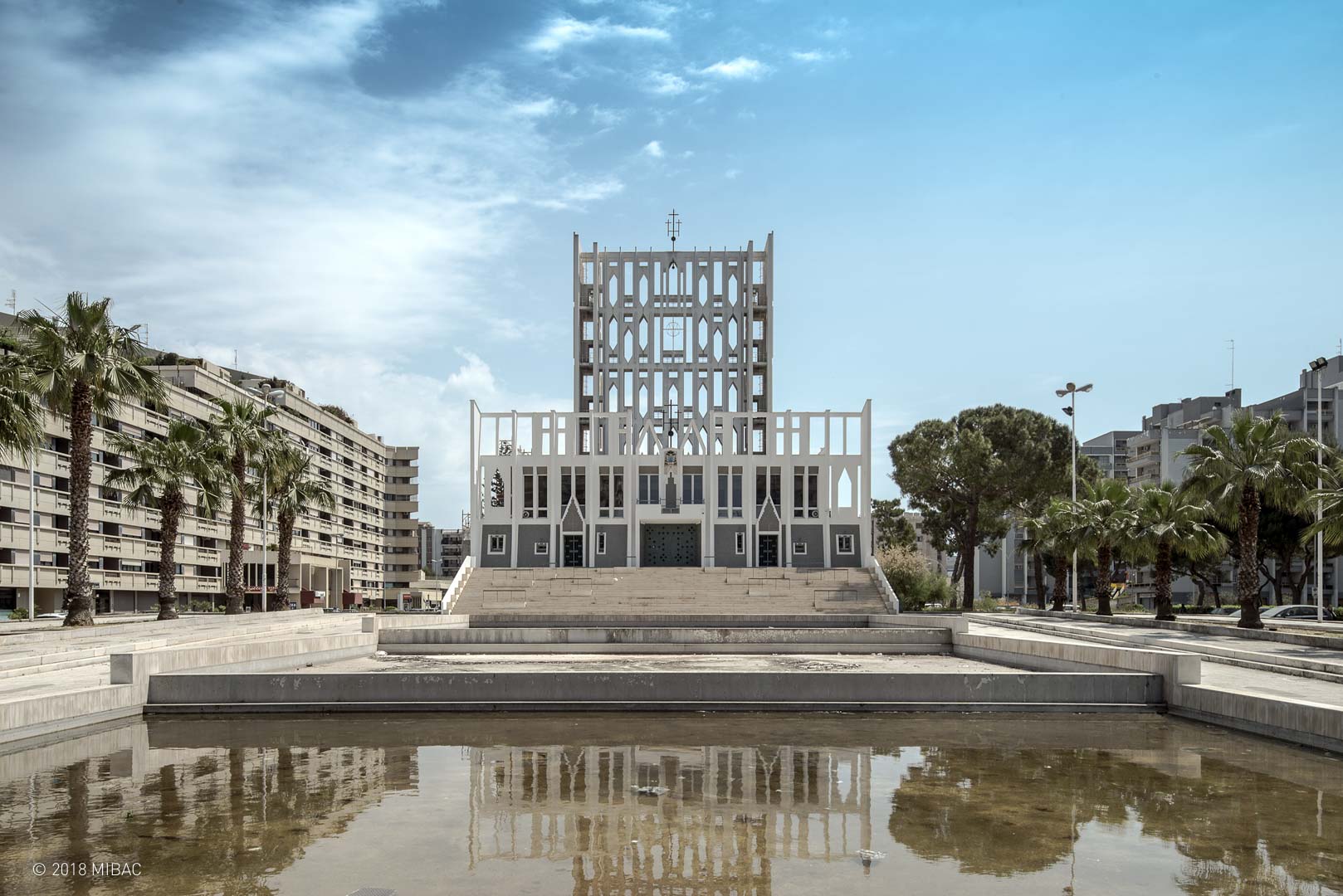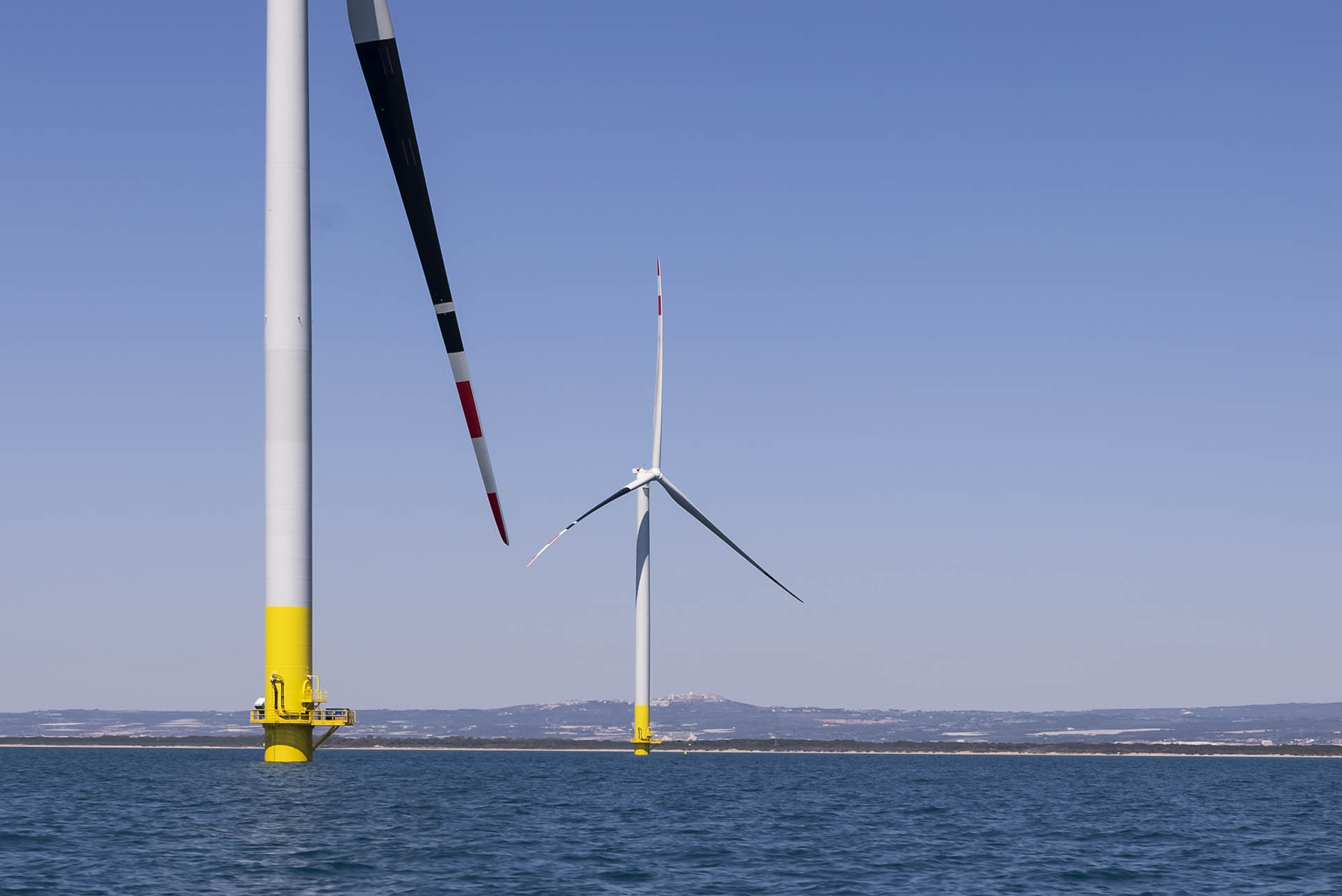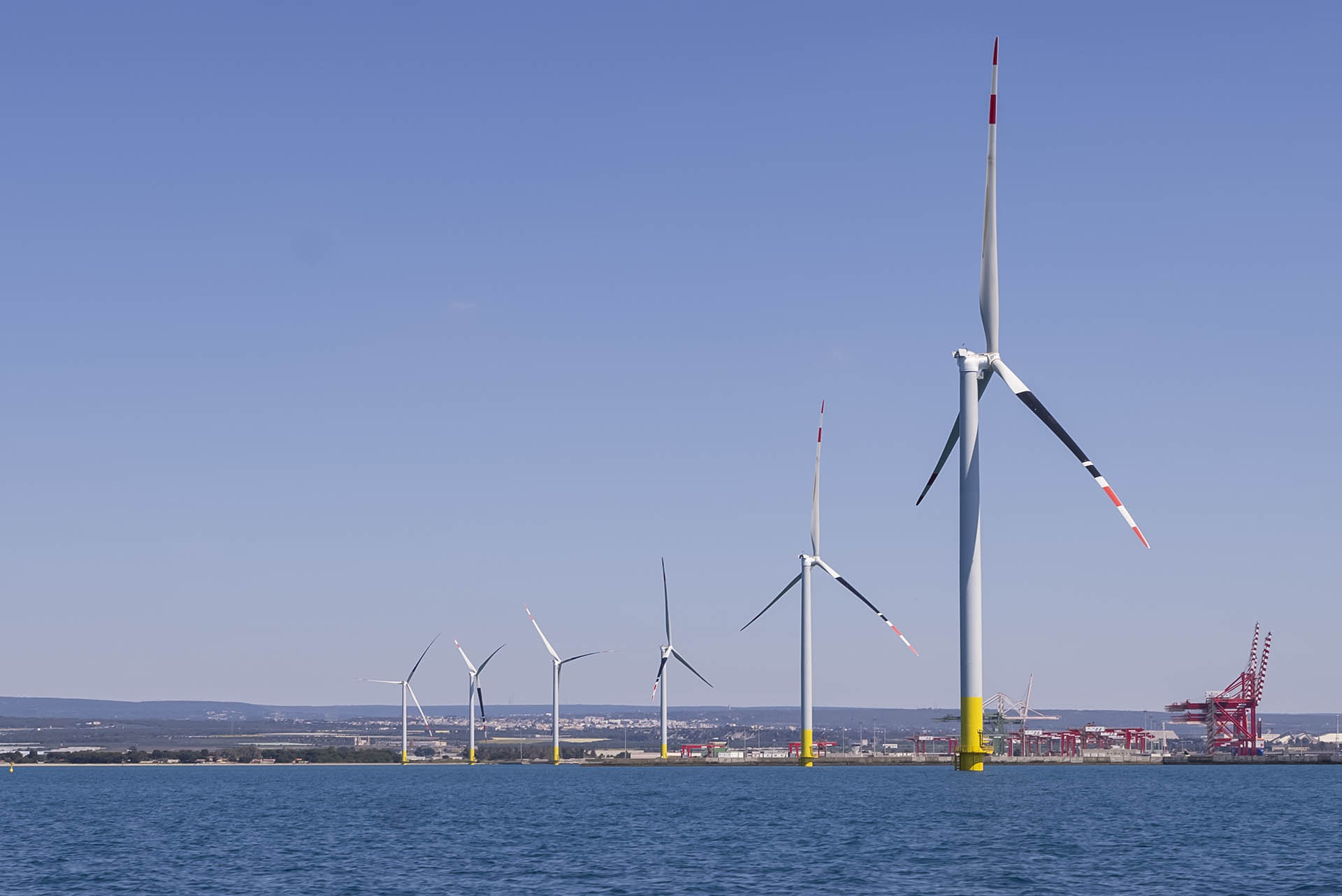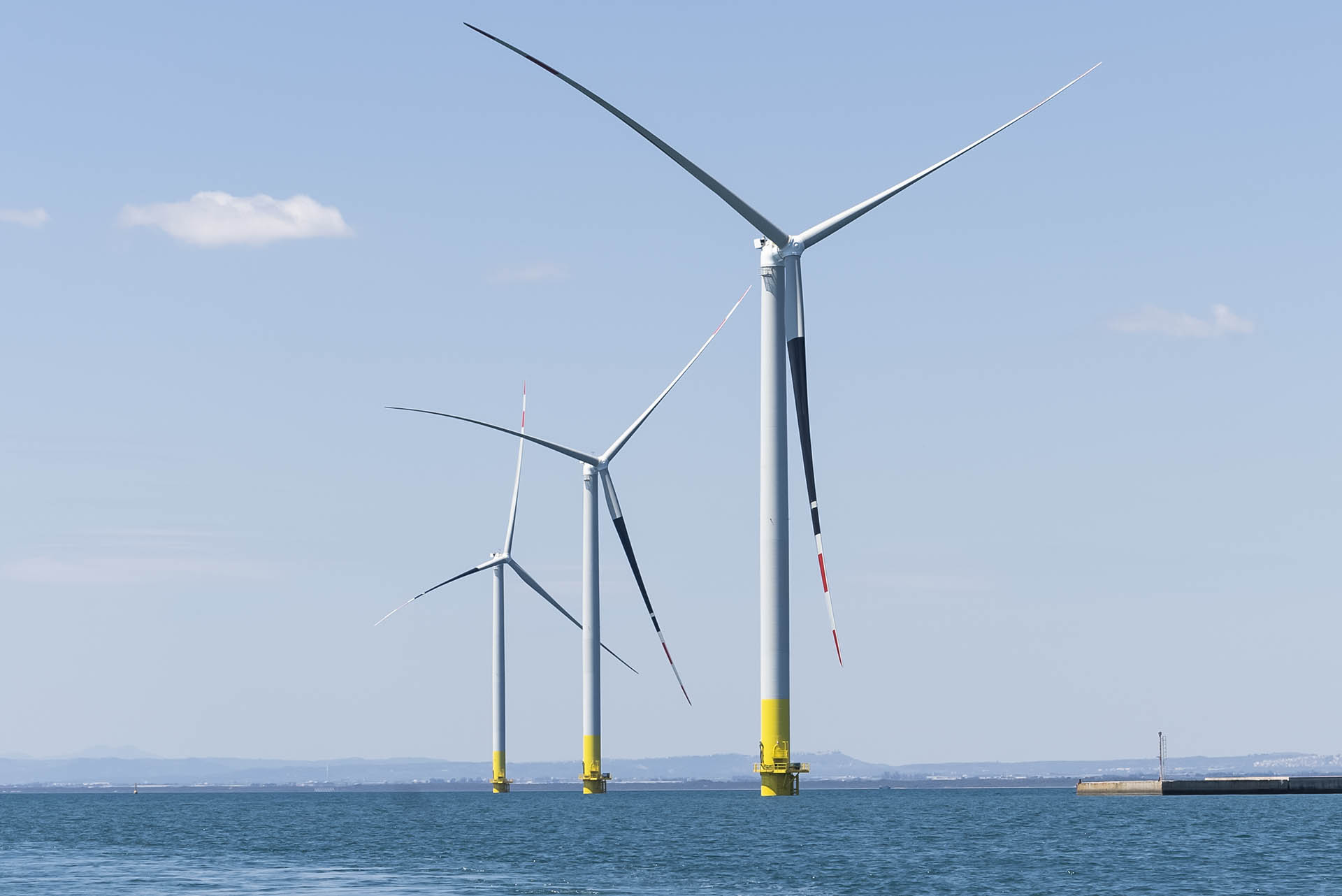Project Description
Taranto
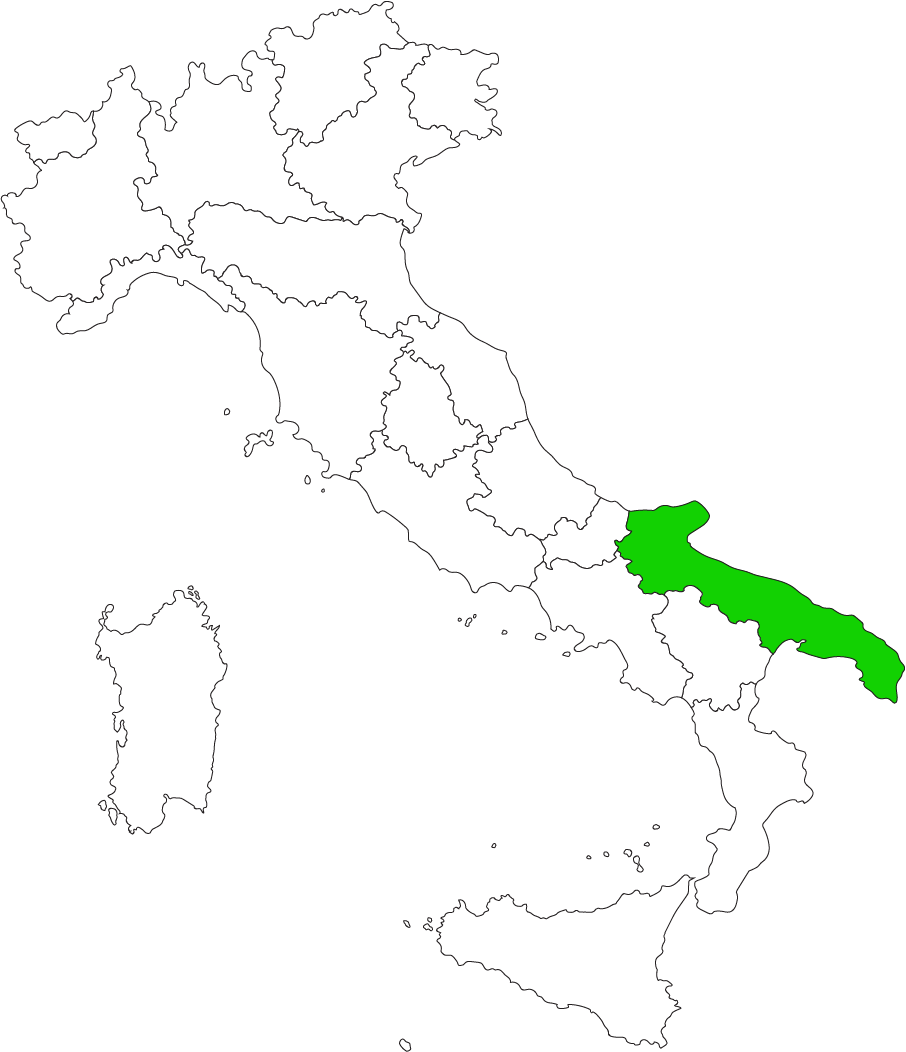
Taranto

Where it is
From the old city of Taranto, the wind turbines are invisible to the eye, not a trace of them on the horizon. You cannot even see them from the newer part of the town. You have to arrive to the Multi-sector Pier to get a glimpse of the first turbines, that are aligned with the pier, at a distance of about 300 metres. The others are more than 3 kilometres out at sea as the crow flies. They give an idea of lightness and also bring to mind our future, the near one. More renewables and less fossil fuels. It is in this splendid southern city, often only spoken of because of the problem of the ILVA steelworks, that the first offshore wind farm has been established, not only an Italian project, but a Mediterranean one.
For once, with Italy leading the way, as Luigi Severini, the wind farm’s designer, declares. “Taranto here”, he adds, “ has become a laboratory for future challenges”. As well as for new types of tourism, as, soon, among the park’s towers, there is planned an actual gym for practicing scuba-diving archaeology, an area with archaeological remains, vases, jars and statues. It was foreseen for the Scuba-diving Carabinieri Centre, which has nowhere else for the police to train, but it will also be open to diving enthusiasts and university students for their practical studies. The project includes the idea of building a land centre to be equipped as a multi-media museum linked to the university and the world of tourism.
| Legend |
|---|
 Wind Farm Wind Farm |
Browse the map and discover the places to visit, where to eat and where to stay, chosen by Legambiente
Furthermore, where else could an offshore wind farm be built other than near a city that has been renamed “The City of Two Seas”? Indeed, Taranto does have two seas. The Piccolo Sea, a coastal lagoon of 20 km2 (from above it appears as an upside-down eight), and the Grande Sea, which would be the Ionian. A possible itinerary to view the seas and surrounding lands, bringing together the different souls of the city, could begin by taking the Circum Mar Piccolo, an old road that follows the coast and notably the two elliptical-shaped forms of the Piccolo Sea of Taranto. A silent and wild place, immersed in nature, with a romantic atmosphere and wide vistas, where it is easier to come across animals – herons, flamingos, the knights of Italy – than humans.
The municipality has recently set up the Ecomuseum “Palude La Vela-Mar Piccolo”, a museum spread out over the area that has the aim to preserve and enhance the reserve’s biodiversity, but also to carry out a sustainable development project based on experiential tourism. A magical place where there is the possibility for birdwatching, wandering along the pathways of old traditions or canoeing. There are truly many things you can discover along the Circum Mar Piccolo – from the old masseria (farmstead) of San Pietro, already inhabited in Roman times and which today has been transformed into an elegant relais, to the Roman aqueduct, partly visitable, to the Battendieri Monastery, dating back to 1597 and built by the Capuchin friars, who here beat and washed wool to make sacred robes.
The Black Mussels of Taranto
Moreover, the Piccolo Sea also hosts, and we could say has always done so, the farming of the Taranto “Cozze Nere” (black mussels), a gastronomic excellence of the city and making it a new Slow Food centre. The first writings about the mussels date back to 1525, and still today the farming practices are based on the centuries old knowledge of the local mussel farmers, passed down through the generations, even if the traditional pole structures have been progressively replaced by more modern techniques and materials.
The mussels sweet taste comes from the presence in the Piccolo Sea of many freshwater springs, called citri, which merge with the seawater lowering its salinity, and bestowing that unmistakable taste. A word of advice – if you should come across them raw, just add a squeeze of lemon.
Then, there is the Galeso, one of the smallest rivers in the world, only 900 metres long, a place held dear by the locals, and in the past paid tribute to by poets such as Virgilio and Orazio, who spoke of its “sweet waters”. Its park is a small gem of nature, which Legambiente is trying to save from neglect, by changing the area into a tourist and cultural opportunity.
Today, the park has also become a destination for the Rotta dei due Mari, a route that can be walked or bicycled at a slow pace that crosses through a unique area. The trail begins from Polignano a Mare, follows the cycle route of the Apulian aqueduct, crosses the National Park of Pianelle, the largest nature reserve in the area, and reaches the sea at Taranto, ending up with a splendid view over the Ionian Sea.
About the link between Taranto and water
Where the age old link between Taranto and water is concerned, it is highly recommended to visit to the Co-cathedral Gran Madre di Dio, the church commissioned by the Archbishop of Taranto, Guglielmo Motolese, and designed by the famous architect, Gio Ponti, in the new part of the city.
The work, which arose from the need to build a religious centre near the new suburbs of the expanding city, in the designer’s intention, was to represent a sort of perforated “sail” reflecting the waters of the 3 pools in front of the entrance, symbolising the sea. A true masterpiece, which on the occasion of its 50th anniversary was returned to the city, as the designer from Milan had wanted. It would be a real pity to miss it.
Finally, to finish up this tour with the theme of water running through it, it would be worth organising a trip to the Cheradi Islands, an archipelago of two islands belonging to the military and enclosing the south-western side of the Grande Sea. The smallest, San Paolo, hosts a navy base, as well as a Napoleonic fort (Forte de Laclos), and can be visited, while San Pietro has only just been recently opened to the public and can be reached in the summer by a public ferry.
Places not to be missed
At this point, all that remains is to take a pleasant stroll around the old town, the oldest part of Taranto, surrounded by the sea and linked to the new area by a swing bridge – the locals simply call it “the island” – and end up visiting the Marta l National Archaeological Museum of Taranto, among the most important in Italy, that has always occupied the former Monastery of the Alcantarini Monks. Here you can find more than 200 relics and artifacts dating from prehistoric to medieval times that recount the history of the origins of the South of Italy. Not to be missed is the section dedicated to the Gold of Taranto, an extraordinary collection of goldsmith art from the Hellenistic period, a precious testimony to the highly refined goldwork of Magna Grecia.
